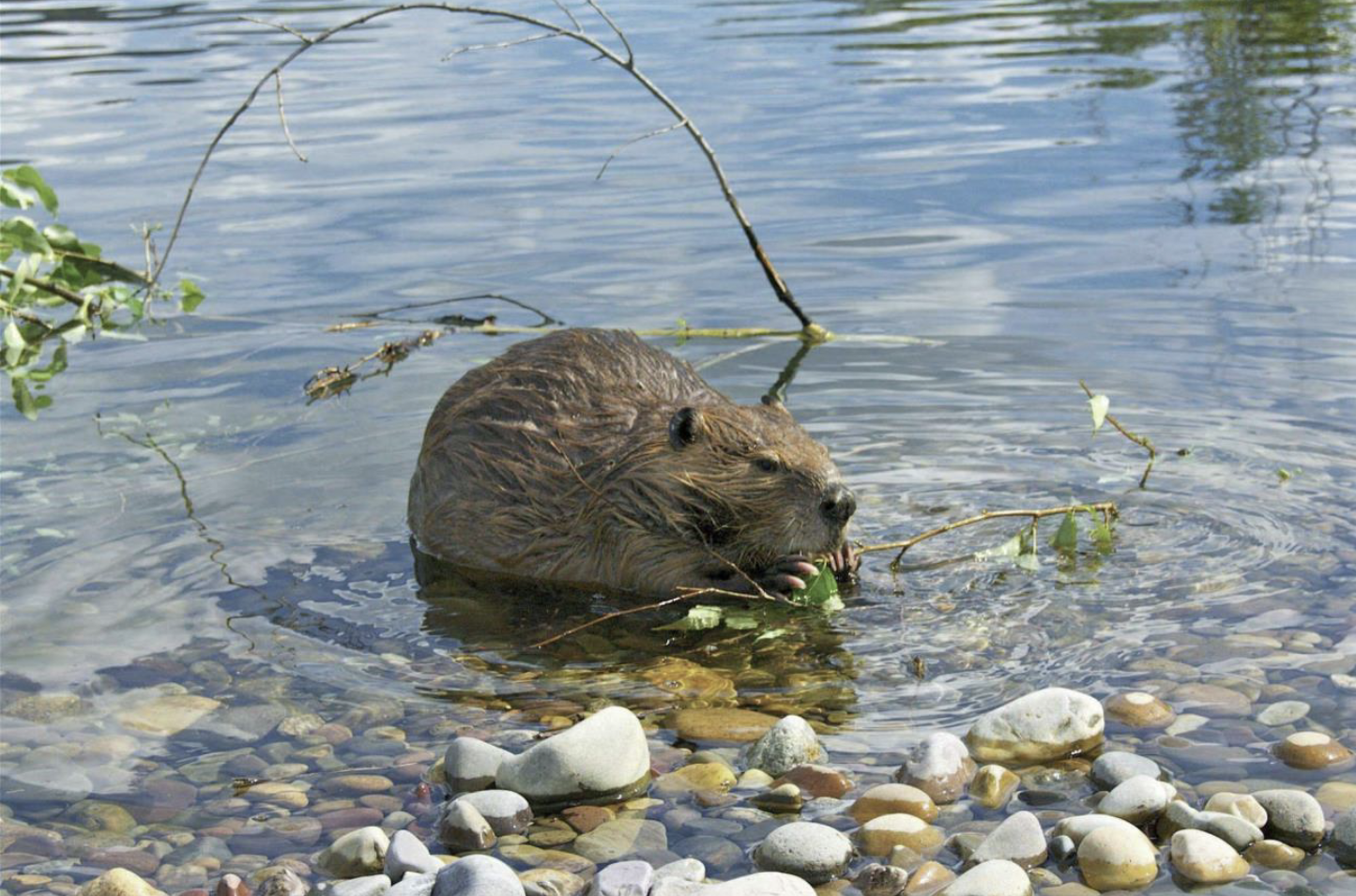Op Ed: “Beaver are nature’s firefighters. So why is California killing them” -San Francisco Chronicle

This article was originally printed in the San Francisco Chronicle on June 26, 2021 and referenced only California. While the budget numbers and numbers of dead beavers vary between California and Oregon, the question is also being asked by Oregonians: “Why is Oregon killing beaver in the face of the science, economics and desperate need for water, natural fire breaks and salmon recovery?” Who benefits from the continued killing and who loses? Dr. Emily Fairfax, whose work is reference below, spoke at Bark’s Ecology Club last October to discuss one of the most overlooked natural firefighters—the beaver—along with her work to highlight their ecological importance. Click here to watch the recording of the original event!
Reservoirs are shriveling around California. Ranchers are cutting losses by selling stock they can’t afford to give water. Municipalities are getting ready to restrict household water usage.
California has barely reopened from COVID restrictions and the crushing combination of climate change and drought has already made life feel dire again.
And it’s only a matter of time before the fires start.
Last summer California endured the single most flammable year in modern history. Record-setting fire after record-setting fire churned through the state, including the August Complex fire, the first “gigafire” ever recorded in state, which burned more than 1 million acres.
This summer, more than $2 billion in state funds will go towards fighting fires. And even with those record expenditures, we’re likely to endure a heavy loss. Once again there is too little water and too much dry fuel. And once again we continue to ignore or even kill the water-saving firefighter who would work for free to protect us: the beaver.
In 2018, Dr. Joe Wheaton, watershed sciences professor at Utah State, posted a tweet showing a green watery ribbon snaking through charred desolation after the Sharp’s fire, with the caption: “Turns out water doesn’t burn. Thank you beaver!”
The striking image caught the attention of a Colorado University Boulder doctoral student named Emily Fairfax, who happened to be studying the role of beaver habitat in large-scale fire events across five states.
Her subsequent research, published under the title “Smokey the beaver,” used satellite imagery to look at vegetation in riparian areas with and without beaver dams. She found beaver complexes were three times more resistant to wildfire than similar areas without beaver.
Beaver habitat, with its dams, ponds and canals showed less wildfire damage than un-beavered streams. In keeping water on the landscape beaver reduce fire, mitigate drought and recharge groundwater — all things we need in California.
In April of this year, Sonoma State University held the first ever “California Beaver Summit” to discuss how beaver could help mitigate the effects of climate change in a drying state, assist salmon and reduce risk of fire. Nearly 1,000 people enrolled, including California Department of Fish and Wildlife officials.
There is growing interest in the value these engineers can deliver. But this has not translated into policy, even in the face of climate change. Instead, California continues to depredate beaver at an alarming rate, issuing more than 170 permits for beaver killing in 29 counties around the state. This year alone, the state sanctioned the take of more than 2,500 beaver.
Meanwhile, Dr. Fairfax’s research made a handful of headlines in a few strategic places, but went largely unmentioned in broader discussions of potential fire mitigation strategies in the wake of last year’s blazes. No one discussed the beaver population in fire-stricken Butte or San Joaquin counties. Ranchers who kept beaver dams in their waterways weren’t given state funds for “reducing fire risk.” Farmers who maintained beaver dams in their streams received no environmental tax credit for helping the state save water.
Next year’s proposed budget for California increases funding to CDFW by 17%. Unfortunately, zero of these dollars will go towards beaver solutions or educating landowners about the animal’s many benefits. Likewise, none of the proposed Cal fire budget will be directed towards keeping beavers on the landscape and letting their otherwise free ecosystem services lower fire risk for everyone.
Beaver save water and reduce the risk and severity of wildfire. They do it all day, every day, at zero tax-payer expense. Their ponds have been consistently shown to increase biodiversity from stoneflies to steelhead. Beaver ponds help fish survive at a time when the Pacific coast is hemorrhaging salmon.
Our own self-interest dictates our attention. Yet California isn’t learning. We’re locked in a beaver blind-spot.
As we face another flammable summer, California is alone among the 11 contiguous western states in refusing to allow beaver relocation to restore riparian function or increase water storage. Other states with better beaver management and more sensible policies — Washington, Colorado, even New Mexico — must be asking what we are thinking.
California is literally burning for answers.
Heidi Perryman is a child psychologist and “beaver advocate.” She founded the group “Worth A Dam” to educate cities about how and why to coexist with beaver.